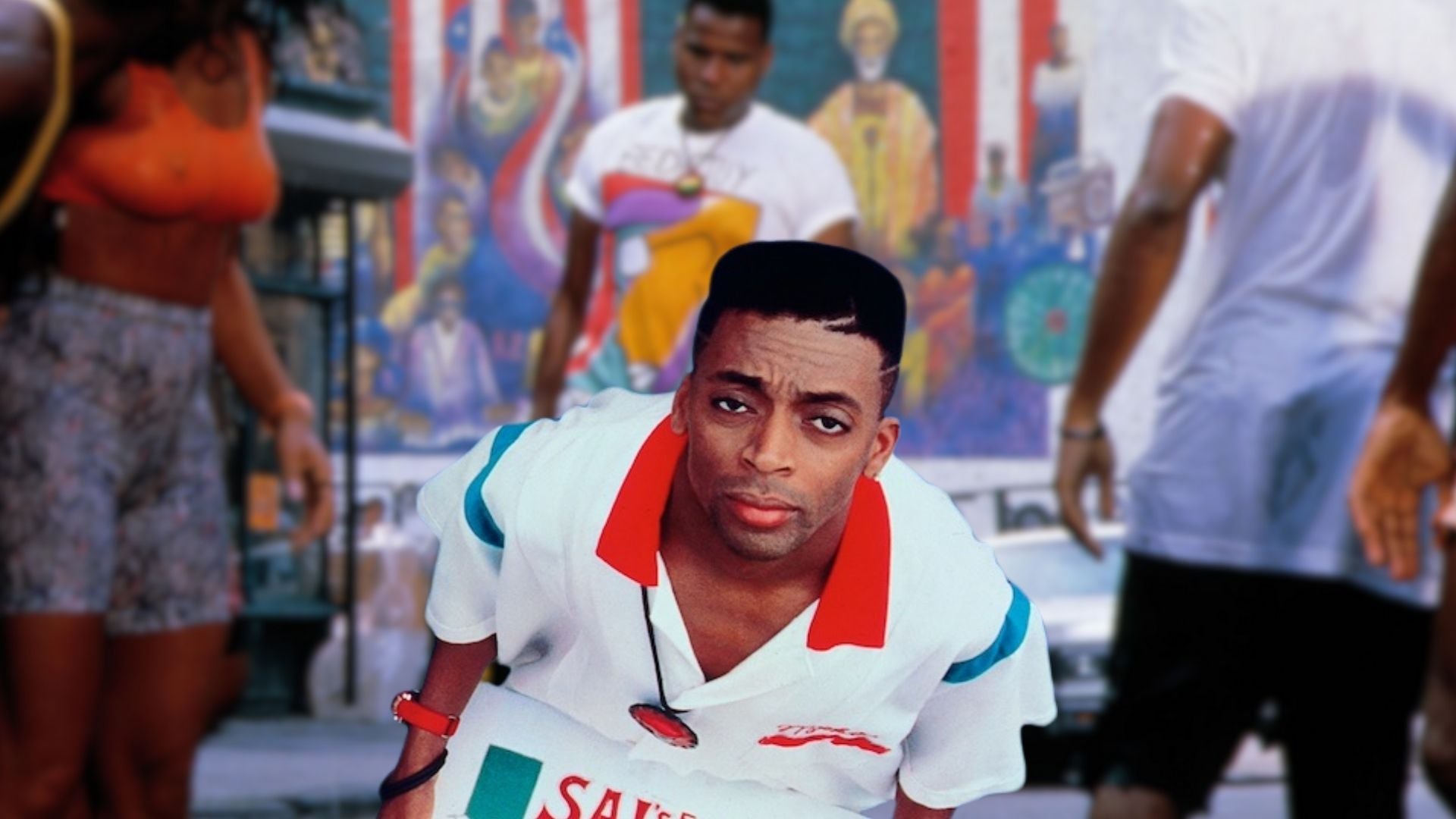
Do the Right Thing – Mookie X
Welcome to our Reference Degustation where we take you through a month long double dolly celebration of Spike Lee Joints. Tune in to Mister Senor Love Daddy, curate the Wall of Fame and survive the rising heat. Keep it nasty to your ears, the ears to your nasty with Do the Right Thing this week. […]
Hosted By
KT & Oti
For Your Reference
Show Notes
Welcome to our Reference Degustation where we take you through a month long double dolly celebration of Spike Lee Joints.
Tune in to Mister Senor Love Daddy, curate the Wall of Fame and survive the rising heat. Keep it nasty to your ears, the ears to your nasty with Do the Right Thing this week.
If you’d like to watch along, we will be covering the below…
Do The Right Thing (1989)
Malcolm X (1992)
Bamboozled (2000)
BlacKkKlansman (2018)
Thanks to patrons and guests for contributing to common and recurring themes we will be incorporating as we review.
Check out more tasty Reference Degustations…
2020 – Hayao Miyazaki
2021 – Taika Waititi
2022 – Quentin Tarantino
2023 – Takashi Miike
2024 – Martin Scorsese
We also posted coverage for exclusive early access to Sinners Trailer 2 and had our submitted question answered by Ryan Coogler.
—
Summary
Introduction
Welcome, friends and lovers, to an in-depth discussion and a celebration of Spike Lee’s influential film “Do The Right Thing,” as featured on the “For Your Reference” podcast. This article captures a dialogue engaging with the themes, filmmaking styles, and cultural commentary evident in the movie. Join us in our explorative review as we delve into the spicy layers of storytelling and societal critique that make this film a quintessential cinematic experience.
Spike Lee’s Cinematic Style
Grounded and Theatrical Artistry
Spike Lee’s “Do The Right Thing” transcends mere filmmaking by establishing a theatrical and grounded narrative. The film’s vivid colors and expression of character dynamics make it feel like a play brought to life. Each character interaction is meticulously designed to reflect the social and racial tensions embedded in a Brooklyn neighborhood, showcasing Lee’s exceptional direction and stylistic choices.
Double Dolly Shot
Among Spike Lee’s signature filmmaking techniques is the “double dolly shot,” where characters appear to float towards the camera. This artistic choice brings an intense focus to character manifestos and direct thoughts, enhancing the narrative’s emotional depth. Throughout Lee’s filmography, including this film, the double dolly shot serves as a visual cue to pull viewers into a deeper understanding of the characters’ internal struggles and societal roles.
Music and Cultural Impact
Spike Lee’s innovative integration of jazz and hip-hop underscores the cultural backdrop of “Do The Right Thing.” With contributions from legends like Public Enemy, the music shapes the film’s narrative driving force. Songs such as “Fight the Power” become anthems within the film, amplifying the message of resistance and empowerment in the face of oppression. This curated musical landscape mirrors the vibrancy and gravity within Spike Lee’s cinematic universe.
Racism and Social Commentary
Exploring the Layers of Prejudice
“Do The Right Thing” navigates the complexities of racism and community dynamics through a lens of authenticity. The film’s portrayal of different racial groups inhabiting the same neighborhood highlights the contrasting perspectives and tensions simmering beneath the surface. Characters like Sal symbolize the grandfather racism that persists subtly but powerfully.
Police Brutality and Social Justice
The film’s climax, involving police brutality against Radio Raheem, epitomizes the disturbing realities that remain relevant today. Spike Lee orchestrates a fervent call to action, urging audiences to acknowledge and respond to systemic racism. The panel discussions at Cannes further emphasize the resistance to change, reflecting societal attitudes that demand introspection and reform.
Understanding Cultural Perspectives
Spike Lee’s work often faces scrutiny, not only for its content but also for its bold display of cultural realities. During the Cannes Q&A, Lee highlighted global racism’s pervasive nature, challenging the notion that such issues are uniquely American. His insistence that filmmakers are not obligated to provide solutions underscores the role of art as a mirror to societal flaws rather than a prescription for them.
Conclusion: Spike Lee’s Legacy
Spike Lee’s “Do The Right Thing” extends beyond a film into a cultural commentary that remains pertinent decades later. By inviting viewers to confront harsh truths and embrace uncomfortable conversations, Lee solidifies his position as a storyteller who elevates the art form while challenging social constructs.
Through our flavorful reference degustation, we hope to have shared insights that engage your palate beyond conventional viewing. As we raise a glass to Lee’s illustrious filmography, we encourage friends and lovers to support the arts and explore the rich tapestry of storytelling that shapes our collective consciousness.
Join the Conversation
Follow us on Twitter, Instagram, and Blue Sky at @ForYourRefPod, or join the “Fight the Power” Podcast. If you cherish this conversation as much as we do, leave a rating and review, and continue the journey with us in upcoming episodes celebrating cinematic art.
Episode Details
- Duration
- 0:00
- Released
- February 4, 2025
- Category
- Episode
- Hosts


Up Next
The Beast in Me – Jekyll & Snide
December 2, 2025
100m, Bugonia, If I Had Legs I’d Kick You & Predator: Badlands
November 11, 2025
Dreaming Whilst Black – How Much A Dollar Cost
November 5, 2025